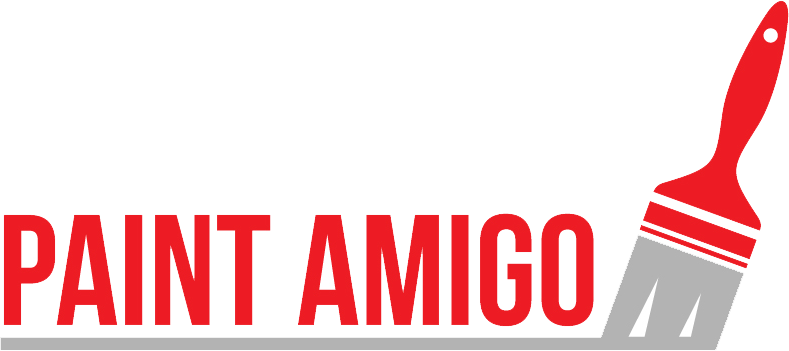Job site safety is crucial for both yourself and your customer. In addition, job site safety needs are different per project. Therefore, here are some safety tips for the many types of projects and conditions you may encounter.
A 12-Point Job Site Safety Guide For The Pro Painter
1. Job Site Safety for Residential Painting
- The use of low VOC latex paints combined with light sanding means that a disposable particulate respirator with carbon embedded in the filter media can help reduce your airborne exposure to sanding dust and paint odor.
2. Job Site Safety for Commercial Jobs
- Solvent-based paints and coatings are typical, so a half or full facepiece respirator with organic vapor cartridge and particulate prefilter are often used.
- When spraying, consider safety goggles if there is potential for overspray.
- Jobs can sometime last longer than expected, so make sure you have replacement personal protection equipment on hand. Therefore, at the end of the work shift, remove the cartridges from the respirator and store them in a resealable plastic bag to help preserve the cartridges’ service life.
3. Job Site Safety for New Construction or Major Remodeling (residential or commercial)
- There are likely lots of other activities happening on the job site (nail guns, drills, saws), so even though you’re just painting, you should consider hearing protection and safety eyewear.
- If you’ll be stripping off old layers of paint or other coatings, you may need chemical-resistant gloves appropriate for the hazard. The stripper itself could have harmful components so make sure to check the safety data sheet when choosing a chemical cartridge for your respirator.
- If there are hanging wires, a non-vented electrically-rated hard hat may be a good choice to help prevent accidental contact with unanticipated live wires. So check the electrical rating of the hard hat to verify that it is sufficient.
- Consider impermeable coveralls with fully-sealed seams when lead or asbestos is present. Use abatement rated coveralls. In addition, wear the appropriate respirator. Dispose coveralls at the end of the work shift to prevent transfer of contaminants to clean areas or even your own house.
4. Light Remodeling of Existing Home or Commercial Facility
- Respiratory protection and safety eyewear may be required. For example, if power tools or even hammering are creating loud noises, consider hearing protection.
5. Interior Jobs
- An N95 disposable particulate respirator is a staple for drywall sanding.
- Use hearing protection and safety eyewear if other construction or remodeling work is going on at the site.
6. Exterior Jobs
- While chemical concentrations will likely be lower when you’re outside and fresh air will dilute your exposures, you may still need to consider respiratory protection if it’s windy or if paints/coatings become aerosolized via spraying. Therefore, a typical configuration is a half or full facepiece respirator with organic vapor cartridge and particulate prefilter.
- Use a disposable particulate respirator for sanding or for pressure washing surfaces prior to painting.
7. Age of Structure
- If built prior to 1978, be prepared to check for lead and to wear the necessary personal protection equipment (PPE) if lead is found. So for respiratory protection, that means at minimum, a “100-class” particulate respirator or even a powered/supplied air configuration for higher concentrations.
8. Weather Conditions
- In high temperature/high humidity conditions, a respirator with an exhalation valve may be more comfortable. In addition, to help decrease fogging of safety glasses, look for safety eyewear with an anti-fog coating.
- If hearing protection is needed, you’ll likely find that ear plugs are more comfortable than ear muffs which can generate heat against your head and ears. If spraying, consider coveralls with a breathable back panel.
- In cold temps working outdoors or in a building that isn’t climate-controlled, a full facepiece respirator with an anti-fog coating can be a benefit to address the heat differential between the outside air and the warm air of your breath.
9. Staining
- Since you’ll be using more solvent-based materials, the need for respiratory protection increases. Not all organic vapors can be filtered effectively with a chemical cartridge. Therefore, check the Safety Data Sheet for the hazardous ingredients and use the appropriate NIOSH-approved respirator configuration for those ingredients.
10. Spraying
- Wear wrap-around safety glasses or goggles to help keep the mist out of your eyes.
11. Dusty Conditions
- Wear a disposable particulate respirator. An N95 is the most common class of disposable respirator and is typically used for drywall dust.
12. Unpleasant Odors
- Even though the chemical concentrations may not be hazardous, sometimes you just don’t want to smell paint odors while you’re working. Consider a disposable particulate respirator with nuisance-level organic vapors (OV) relief. Organic vapors (OV) are the sweet, fragrant chemicals that give paints their signature scent.
So Amigos, do you recommend any other job site safety tips? Share below…
Also, check out Paint Amigo’s safety product recommendations below (Amazon affiliate links)…
No products found.
P.S. Download my free eBook The Profitable Painter. Click here.





